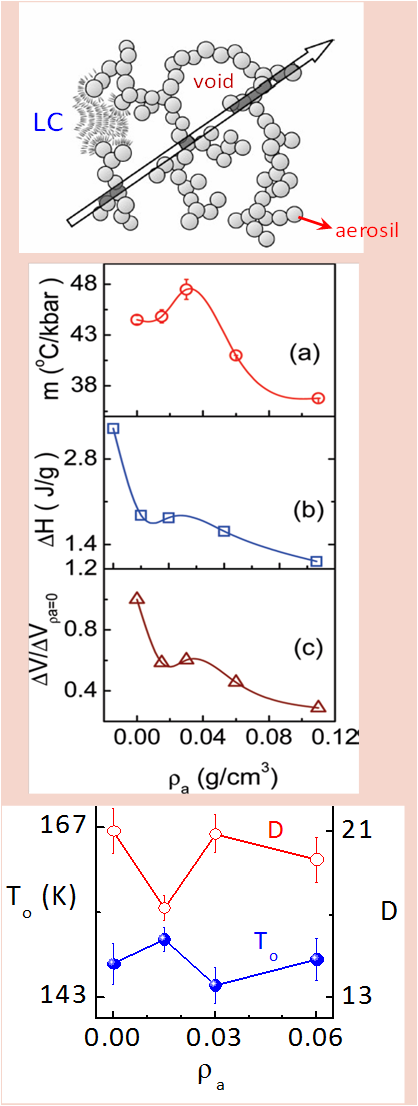Nanocolloidal Aerosil-Nematic Composites: First study under pressure
Prasad N. Bapat, D. S. Shankar Rao, S. Krishna Prasad, and C. V. Yelamaggad,
J. Phys. Chem. B, 114, 12825 (2010); Thermochimica Acta, 495, 119 (2009)

We report the effect of applied pressure on the dielectric properties of composites of a nematic liquid crystal with hydrophilic Aerosil particles. The study, which is the first of its kind on the nanocolloidal Aerosil systems, also has the novelty that a weakly polar nematogen is used as the host material. In conjunction with differential scanning calorimetric data, these measurements show that not only TN-Iso, the nematic-isotropic transition at room pressure, but several other parameters exhibit a nonmonotonic variation with increasing Aerosil concentration. The dependence of the relaxation frequency of the mode connected with the reorientations of the molecules around their short axis is probed along isobaric as well as isothermal paths, and the determined activation parameters are discussed in terms of the chemical structure of the host molecule. The temperature dependence of the relaxation frequency at atmospheric pressure, exhibiting non-Arrhenius behavior, has been analyzed using the Vogel-Fulcher-Tamann expression, yielding information regarding the influence of the Aerosil concentration on the fragility strength (D) as well as the glass transition temperature (To). The calorimetric data is also discussed in terms of the concept of a crossover from the random-dilution to the random-field limits.
